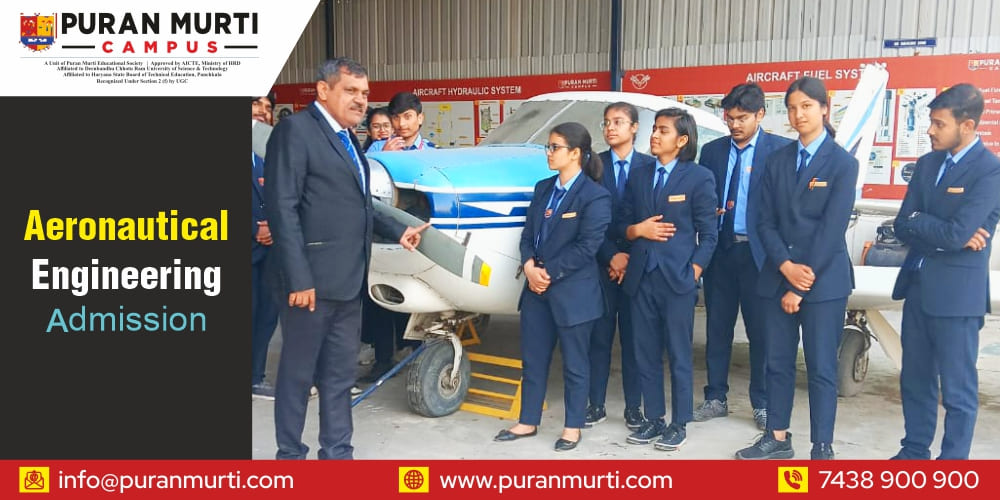Aeronautical Engineering Admission
Posted on : 23 June, 2025 1:24 pm
Aeronautical Engineering Admission: Your First Step Towards the Skies
Aeronautical Engineering Admission: Your First Step Towards the Skies
Let’s face it—there’s something magical about flight. Whether it’s the roar of a jet engine or the quiet elegance of a glider slicing through the sky, aviation captures the imagination like few other fields. If you’ve ever dreamed of being the brain behind these flying marvels, then Aeronautical Engineering might just be your runway to a thrilling career.
But how in the world do you even get started? What is admissions, anyway? And what do you just need to know ahead of time before you apply? Don’t worry—nobody has your back more than us.
✈️ So, Exactly what Is Aeronautical Engineering?
Let’s get that out of the way before we even begin discussing admissions.
Aeronautical Engineering is one of the branches of aerospace engineering that pertains to the development, design, testing, and maintenance of airplanes. It incorporates subjects such as aerodynamics, propulsion, material science, structure analysis, and avionics. In short terms, it’s air science.
📚 Admission Process of Aeronautical Engineering (UG Courses)
Let’s break down the Aeronautical Engineering admission process step-by-step for undergraduate (B.Tech/B.E.) programs.
Let’s divide the Aeronautical Engineering admission process step by step for undergraduate (B.Tech/B.E.) courses.
1. Fulfill the Eligibility Criteria
Check the eligibility criteria before applying:
Completed 10+2 with PCM.
60% minimum marks in most of the colleges, but it may differ.
More lenient criteria in private colleges.
2. Clear an Entrance Exam
The majority of the colleges and universities have entrance exams such as:
JEE Main (for IIITs, NITs, and some IITs for aerospace streams)
JEE Advanced (for IITs offering aerospace/aeronautical engineering)
State-level tests (like MHT-CET, KCET, etc.)
Private university tests (like VITEEE, SRMJEEE, AEEE)
A good score will get you into good colleges with fantastic labs, internships, and placements.
3. Application to Colleges
Once you’ve taken the exam, it’s time for:
Apply online via the counseling website (e.g., JoSAA for JEE scores).
Or apply to private colleges directly if there is a special procedure.
Some colleges have direct admission on merit or management quota as well.
4. Counseling and Seat Allocation
You will attend a counseling session where:
You complete your college choices.
Seats are allotted based on your entry score and availability.
After getting sanctioned, you pay charges and upload documents to complete your admission.
🔧 Aeronautical Engineering Admission (Diploma Courses)
Not yet ready for a 4-year degree? No problem.
Eligibility:
Passed Class 10 with Science and Maths.
50% marks minimum (institution-wise).
Admission:
Based on polytechnic entrance exams OR
Direct admission in certain private colleges.
Diploma courses take 3 years and can have lateral entry scope to a B.Tech course later.
🎓 Aeronautical Engineering Admission (PG Courses)
Specialize or go deep? Here’s what you’ll need:
Eligibility:
A B.Tech/B.E. in Aeronautical, Aerospace, Mechanical, or allied discipline.
Admission:
A very good GATE score will usually be needed for most M.Tech/M.E. courses.
Apply through CCMT counselling or directly with the universities providing PG course.
🛠️ Documents Required During Admission
Prepare these (photocopies + originals):
Certificates and mark sheets of Class. 10 & 12
Scorecard for entrance exam
Transfer & migration certificate.
ID proof (Aadhar, passport, etc.)
Passport-size photos
Caste certificate (if required)
💡 Tips for Future Aeronautical Engineers
Stay current on application deadlines.
Practice mock tests for your entrance exams.
Learn about scholarships and grants.
Look for colleges based on laboratories, faculty, internships, and placement.
Don’t dream small—but plan ahead either.
🚀 Final Thoughts: Lift-Off Ready.
Becoming an Aeronautical Engineer isn’t about checking boxes—it’s about following your passion. It’s for the inquisitive minds who’ve stared at a plane and asked themselves: “How on earth does that thing stay up there?”
If you’ve got the determination and the drive, then don’t let anything ground your dreams. Prepare well, stay focused, and take that first step towards a career that’s literally above the rest.

